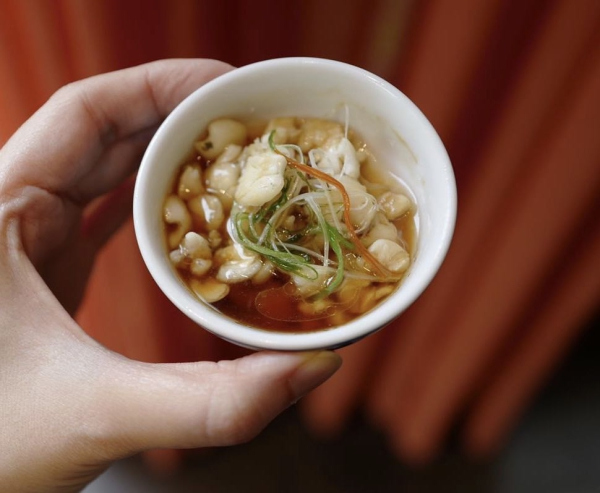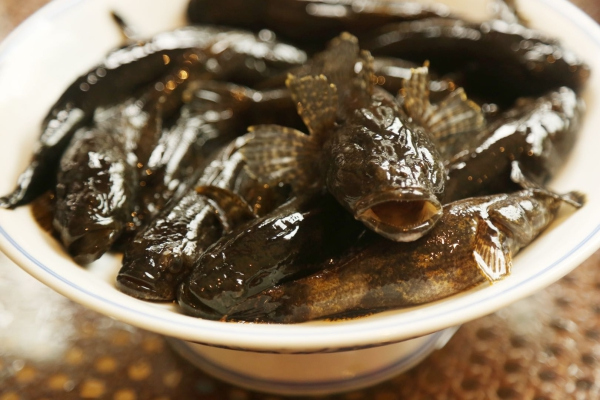Dark sleeper (Odontobutis obscurus) is a springtime delicacy in Jiangnan, a traditional name for the south of the Yangtze River Delta. The small-sized fish can be easily caught in rivers and ponds in Jiangnan. Usually, it is cooked in two ways: it is cooked with springtime bamboo shoots; and it is steamed with eggs. About ten dark sleepers would be enough for a dish. Fishbones and heads must be removed if dark sleepers are to be steamed with eggs. Most family kitchens would choose these two ways to enjoy dark sleeper in springtime.

The dark sleeper can be cooked into a luxury called “meat-like broad beans”. Few families would bother to do the luxury, simply because the dish needs a tiny part from hundreds of dark sleepers. The ingredient has nothing to do with broad beans, however. The ingredient is a tiny bit of half-moon flesh from inside the fish head. As one fish contributes only two half-moon bits, at least 100 dark sleepers are needed to get an adequate amount of “broad beans”. A heap of the tiny flesh bits from the heads of dark sleepers does look like broad beans in a bowl or on a plate.
A book is written in the Song Dynasty (960-1279) mentions a soup made of 216 “broad beans” from 108 dark sleepers. “It is too much a luxury for a family kitchen. But a restaurant can do it easily. After all, the heads of dark sleepers are almost useless,” remarks a modern chef, who knows how to prepare such a dish of half-moon bits from dark sleepers. He first scissors off the heads from dark sleepers steams the heads to a half-done degree, and then pick the “broad bean” bits out of the gill space inside the fish head with a slender bamboo pick. “It needs over 100 dark sleepers to have a full dish of fish ‘beans’,” says the chef.

The fish “beans” are then quick-boiled. They are ladled out of boiling water and placed into a small bowl. After seasonings are added to the fish “broad beans”, the hot oil is poured onto them. The dish is ready.
The delicate taste of dark sleepers is highly appreciated by gourmets. Shen Hongfei (born in 1962), a contemporary gourmet, food writer, and documentary producer, once wrote about the dark sleeper “beans”. “The ‘broad beans’ are not easy to come by. Eating them could be a challenging job. You need to carefully put them into your mouth and chew them carefully and thoroughly to get the full taste. If you are not careful, the smooth and slippery ‘beans’ could fast sneak down into your throat and then into your stomach. That would be a waste of time and delicacy.”

According to Shen, the dark sleeper “beans” and pickled vegetable soup was once served at an important banquet. The rare fish flesh from dark sleepers was simply called “broad beans”. A look at the menu would not reveal what they really were. The delicacy is also mentioned in the written in 1792 by Yuan Mei, a poet, and gourmet of the Qing Dynasty (1644-1911).
Dark sleepers taste best in springtime. Unfortunately, dark sleepers are not as many as they once were in Jiangnan due to the disappearance of some of the fish’s breeding grounds since the 1960s.
